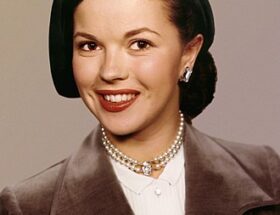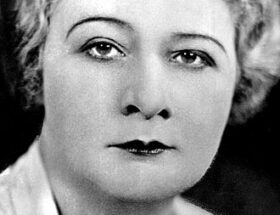Early life

Mary was born on 18 March 1496 at Sheen Palace. She was the fifth child of Henry VII of England and Elizabeth of York and the youngest to survive infancy.
Mary was nursed by Anne Skeron as evidenced by a privy seal bill dated from midsummer 1496, authorizing a payment of 50 shillings to her nurse.
At age six, Mary was given her own household complete with “a staff of gentlewomen assigned to wait upon her”, a schoolmaster and a physician. She was given instruction in French, Latin, music, dancing, and embroidery.
Her governess was Joan Vaux, whom Mary called Mother Guildford. The two women shared a close relationship and Mary was furious when Joan was sent back to England upon her arrival in France.
As children, Mary and her brother, the future King Henry VIII, shared a close friendship. He even named his first surviving child in her honour. They lost their mother when Mary was just six and, given the number of bills paid to her apothecary from 1504 to 1509, it would appear that Mary‘s own health was fragile.
Mary was known in her youth as one of the most beautiful princesses in Europe.
Nature never formed anything more beautiful
Erasmus about Mary Tudor
In 1506, during a visit from Philip I of Castile, Mary was called to entertain the guests, by dancing and playing the lute and clavichord.
On 21 December 1507, Mary was betrothed to Philip‘s son Charles, later Holy Roman Emperor. The betrothal was called off in 1513.
Queen of France

Cardinal Wolsey negotiated a peace treaty with France and on 9 October 1514, 18-year-old Mary married the 52-year-old King Louis XII of France at Abbeville. She was accompanied to France by four English maids of honour (one of whom was Anne Boleyn) under the supervision of her old governess Lady or “Mother” Guildford, who acted as her principal lady-in-waiting.
Upon her arrival in France, Mary was described as being “handsome and well favoured, were not her eyes and eyebrows too light; she is slight, rather than defective from corpulence, and conducts herself with so much grace, and has such good manners, that for her age of 18 years—and she does not look more—she is a paradise.”
Despite two previous marriages, Louis had no living sons and sought to produce one. But he died on 1 January 1515, less than three months after marrying Mary, reputedly worn out by his exertions in the bedchamber, but more likely from the effects of gout. Their union produced no children.
Following Louis‘s death, the new king Francis I made unsuccessful attempts to arrange a second marriage for Mary.
Marriage to Charles Brandon

Mary had been unhappy in her marriage of state to King Louis XII, as she was almost certainly already in love with Charles Brandon, 1st Duke of Suffolk. King Henry VIII was aware of Mary‘s feelings and letters from her in 1515 indicated that she had agreed to wed Louis only on condition that “if she survived him, she should marry whom she liked.”
But Henry VIII wanted any future marriage to be to his advantage. The King’s Council, not wishing to see Charles Brandon gain further power at court, was also opposed to the match.
Meanwhile, rumours swirled in France that she would wed either Antoine, Duke of Lorraine, or Charles III, Duke of Savoy. At one point, even King Francis I, perhaps in hope of his wife Queen Claude‘s death, was one of Mary‘s suitors in the first week of her widowhood. Mary asserted that she had given him her confidence in order to avoid his overtures. A pair of French friars went so far as to warn Mary that she must not wed Charles Brandon because he “had traffickings with the devil.”
When Henry VIII sent Brandon to bring Mary back to England in late January 1515, he made the Duke promise that he would not propose to her. Once in France, Mary persuaded Charles to abandon that pledge and Charles later wrote to the King stating he “never saw a woman so weep.”
The couple wed in secret at the Hotel de Clugny in Paris on 3 March 1515 in the presence of just 10 people, among them Francis I.
Technically, this was treason as Charles Brandon had married a royal princess without King Henry‘s consent. Thus Henry was outraged and the privy council urged that Charles be imprisoned or executed. Mary, as royalty and the King’s favourite sister, was safe from execution.
Because of the intervention of Thomas Wolsey and Henry‘s affection for both his sister and Charles, the couple were given only a heavy fine of £24,000, to be paid to the King in yearly instalments of £1000, the whole of Mary’s dowry from Louis XII of £200,000 and the gold plate and jewels King Louis had given or promised her. The £24,000, approximately equivalent to £7,200,000 today, was later reduced by the King.
Mary and Charles officially later married on 13 May 1515 at Greenwich Palace in the presence of Henry VIII and his courtiers. In 1528, Charles secured a papal bull from Pope Clement VII legitimizing the marriage.
Mary was Charles Brandon‘s third wife and he had two daughters, Anne and Mary, by his second marriage to Anne Browne, who had died in 1511. Mary raised the girls with her own children.
Mary and Charles had four children, two daughters (Lady Frances & Lady Eleanor) and two sons both named Henry that died when they were children.
Even after her second marriage, Mary was normally referred to at the English court as the Queen of France and was not known as the Duchess of Suffolk in her lifetime, despite being legally allowed to be. She spent most of her time at the Duke’s country seat of Westhorpe Hall in Suffolk.
In the late 1520s, relations between Henry VIII and Mary were strained when she opposed the King’s attempt to obtain an annulment of his marriage to Catherine of Aragon. Mary strongly disliked Anne Boleyn. her brother’s intended wife, whom she had first encountered in France.
In March 1532, Venetian Ambassador Carlo Capello wrote of an incident:
One of the chief gentlemen in the service of the said Duke of Norfolk, with 20 followers, assaulted and killed in the sanctuary of Westminster Sir William Pennington chief gentleman and kinsman of the Duke of Suffolk. In consequence of this, the whole Court was in an uproar.
Though it was said to be caused by a private quarrel, he was “assured it was owing to opprobrious language uttered against Madam Anne by his Majesty’s sister, the Duchess of Suffolk, Queen Dowager of France.”. Anne Boleyn was the niece of the Duke of Norfolk mentioned by Capello.
Death
Mary suffered multiple bouts of illness, requiring treatments over her lifetime. She died on 25 June 1533, age 37, at Westhorpe Hall, Suffolk, having never fully recovered from the sweating sickness she caught in 1528. The cause of death has been speculated to have been angina, tuberculosis, appendicitis, or cancer.
As an English princess, daughter of a king, sister to the current king and a dowager queen of France, Mary‘s funeral and interment was conducted with much heraldic ceremony. A requiem mass was held at Westminster Abbey. Her body was embalmed and held in state at Westhorpe Hall for three weeks.
On 22 July 1533, a delegation from France joined the English delegation for the lavish funeral ceremony. Her daughter Frances was chief mourner, accompanied by her husband and siblings. As was tradition, neither Mary‘s husband nor her brother the king attended.
The funeral procession included 100 torch bearers, clergy carrying the cross, six horses pulling the hearse, other nobility and 100 of the duke’s yeomen. A requiem mass and burial at Bury St. Edmunds Abbey followed the next day.
At the funeral, her step-daughters Anne and Mary, pushed themselves to the head of the cortège just before the coffin was lowered into the crypt of the Abbey, much to the consternation of their half-siblings.
Five years later, when the monastery was dissolved, Mary‘s body was removed to nearby St. Mary’s Church, Bury St. Edmunds.


